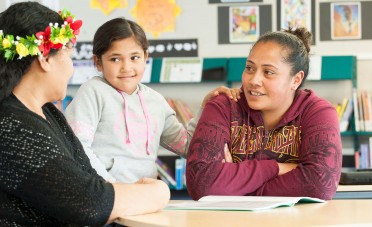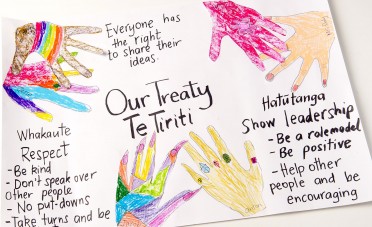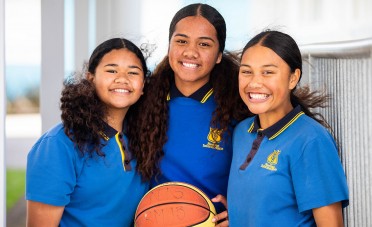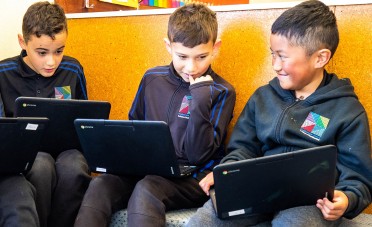Enhancing relationships: Being assertive
Being assertive gives ākonga the opportunity to practise respectfully demonstrating assertiveness when their rights are challenged, and when navigating changing relationships, through dramatic inquiry.

Understanding ourselves and getting on together — Activity collection
This resource is part of the Understanding ourselves and getting on together collection.
Possible learning activities
Ākonga brainstorm situations where their rights have been challenged, such as when another ākonga queue-jumps or keeps interrupting them when they are working. Ask them to discuss their reactions to each of these situations and identify the three different ways that people deal with challenges to their rights: passively, aggressively, and assertively.
Discuss and demonstrate, for example, through role-play:
- Passive response (keeping the head down, looking and sounding timid, and making no eye contact).
- Aggressive response (using a loud voice and physical force, glaring, using put-downs, and making threats).
- Assertive response (making eye contact, speaking firmly but pleasantly, and making clear statements).
- Problem solving (thinking critically and suggesting other solutions).
Emphasise the use of eye contact, body language, facial expressions, and the choice of words.
Ākonga can list the steps to making an assertive response, as follows.
- Make a personal statement about how you feel, such as 'I feel annoyed when ...'.
- Give a reason for your statement, such as '... when you keep interrupting my work'.
- Suggest an alternative, such as 'How about talking to me at lunchtime instead?'
- If the other person continues the challenge, repeat your 'I' statement and then, if necessary, leave.
Ākonga can choose a situation from those identified earlier and, in pairs, role-play an assertive response. Encourage ākonga to analyse the difference in their feelings when being assertive, passive, or aggressive.
This is a good opportunity to use the tikanga of pōwhiri as a context for discussing being assertive. During a pōwhiri on a marae ātea, the domain of Tūmātauenga, any interruptions or breaches of protocol may have consequences.
Cultural and diversity considerations
All ākonga are part of wider whānau, hapū, iwi, and other community groups. Culturally capable kaiako and tumuaki know, value and integrate the cultural capital of their ākonga into the work of creating positive classroom communities. Classroom programmes dealing with mental health should be sensitively developed so that they respect and reflect the diverse values and beliefs of ākonga and the whole school community.
Kaiako of Pacific ākonga should consider what assertiveness looks like for the Pacific peoples represented in their classrooms, and may need to engage with whānau to deepen their understanding here. More guidance for dialogue with Pacific whānau can be found on Engaging with parents, families and communities, which is part of Tapasā on TKI.
Links to the HPE underlying concepts
Attitudes and values
Taking responsibility for their own wellbeing and respecting the rights of others.
Hauora
Taha whānau, taha hinengaro, taha wairua; maintaining personal beliefs, enhancing emotional wellbeing, and strengthening positive social interaction.
Read more about the underlying concepts.
Kaiako notes
Focus inquiry questions around the learning outcomes before and after the activities to support ākonga to reflect and think critically about the activities.





